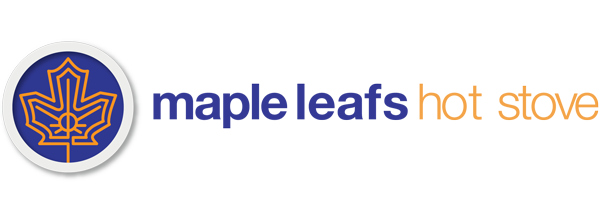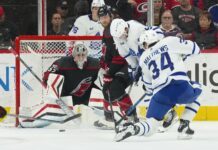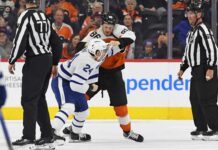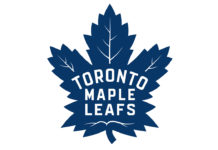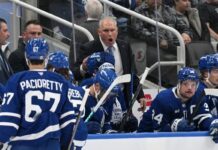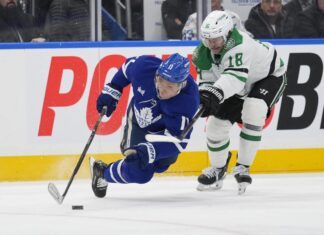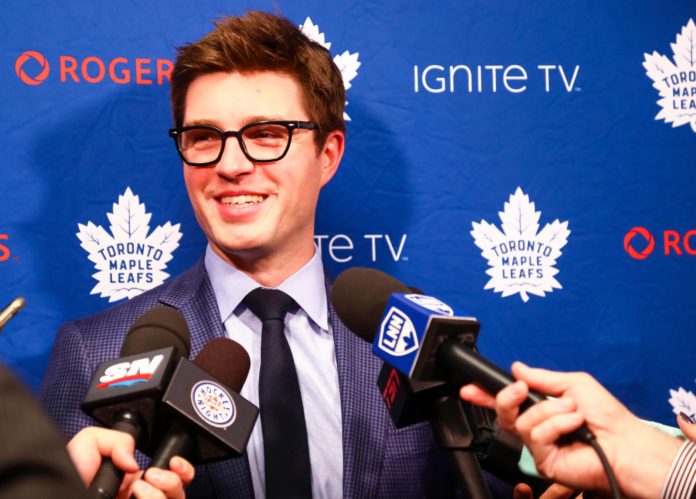
As we inch closer to the trade deadline with each passing week, conversations are naturally shifting to the position Kyle Dubas needs to address through trade.
Last week, we discussed how a lack of cap space and a potential lack of trade assets could make it difficult to acquire more than one key player. It’s totally reasonable, given the play of Jake Muzzin and Justin Holl, that fans are clamouring for a top-four defenseman at this point in time. One could feasibly argue the Leafs only really have one steady pairing set in stone.
This week, I wanted to provide a different perspective on the team’s needs for your consideration.
When the Leafs lost to the Canadiens in the playoffs last year — and even against Columbus the year before that — the production of Auston Matthews and Mitch Marner was heavily scrutinized. Last playoff, they combined for one goal. In the playoff series before last, they combined for two, with Matthews scoring all three of those goals over the two years. To suggest that the Leafs are going to need those two to produce like star talents in order to achieve a deep postseason run is not exactly a novel insight or at all controversial.
This season, with Michael Bunting on their wing, the line has performed well, controlling nearly 60% of the shot share, scoring 10 5v5 goals together, and giving up seven, which is underperforming their Expected Goals For percentage of around 65% at 5v5. It is a really good top line, but therein lies the rub – even if they perform well, how much can you really expect them to outplay (and outscore) the top lines of the three other elite teams in their division?
The Marchand-Bergeron duo is controlling over 65% of the shot share and has the same Goals For percentage as the Leafs’ top line. Florida spreads out their top talent, but in the large sample of ice time when Alexsander Barkov shares the rink with Aaron Ekblad and MacKenzie Weegar – presumably, a matchup the Matthews unit would face regularly – they have controlled nearly 60% of the shot share and have a ridiculous 75% Goals For percentage.
Tampa is a little more difficult to assess due to their injuries, but you’d have to think the matchup would be a Brayden Point-centered line alongside Victor Hedman, which again is close to 60% of the shot share along with a more modest 56% Goals For percentage (if it was Anthony Cirelli with Hedman, it’s just under 58% of the shot share and over 61% Goals For).
The long and short of it is that the Leafs are competing in an elite division that is going to ensure the Matthews-Marner unit matches up against elite players nearly every shift. Even if Matthews-Marner win their matchup, by what margin can we really expect them to outplay any of these combos? By a couple of goals at 5v5? Merely breaking even at 5v5 and producing on the power play?
A big theme that emerged from the loss to the Habs was that the top line was shut down by the Philip Danault line as the series went along and the Leafs didn’t have enough scoring depth to make up for their top line playing to a saw-off.
Now, the Leafs might fairly argue that this was impacted by John Tavares’ absence, but that’s why I think the team’s second line is worth discussing as the deadline approaches.
The Kerfoot – Tavares – Nylander line has now played over 223 minutes together at 5v5. They have a shot share of 49.89%, have been on for 13 goals for, have given up seven (a Goals For percentage of 65%), and their Expected Goals For percentage is 51.92%. They play in situations that generally favour them matchup-wise.
Even if the Matthews unit wins their matchup, is following up with a second line that gives up more shots than it generates and barely edges the opposition on expected goals going to be good enough against really good opposition?
For multiple years now, we’ve seen the Leafs struggle to score in the playoffs, and it’s not enough to chalk it up to an unsustainable shooting percentage. Every team in their division will have an elite defense pairing to match up against Matthews along with an elite centerman. Matthews is an elite player himself and we have to believe he’ll break through, but when/if that happens, he still needs support.
Nikita Kucherov and Point were excellent for Tampa Bay in their back-to-back Cups, but they didn’t do it all on their own. They had legitimate offensive support from the forwards down the lineup. Is that going to be the case with the Leafs’ second line made up the way it is? Further down the lineup, their bottom six has Ondrej Kase (who is a legitimate scoring weapon but needs to stay healthy) as well as maybes like Ilya Mikheyev and Jason Spezza (the former is currently lighting the lamp but will return to earth; one is currently struggling and will need to bounce back at age 38).
Does the issue lie with the defense pairing the Tavares unit plays with, which would mean acquiring a top-four defenseman can help tip the scales? Or do they need an upgrade at forward to play on the second line to give them more scoring options — not only benefitting that line but the bottom six as well by virtue of (presumably) bumping Alex Kerfoot down the lineup? Would improving the second line in turn make the defense’s life a little easier due to the positive trickle-down effect on the second pairing?
To be clear, I’m watching the Leafs’ defense each night right now just like everyone else. I understand the argument for adding there, and improving the defense would obviously be helpful. That said, the forward group has some question marks, too — ones that might not be as big of a deal in other divisions, but the reality in front of the Leafs makes it a discussion worth having.
Notes
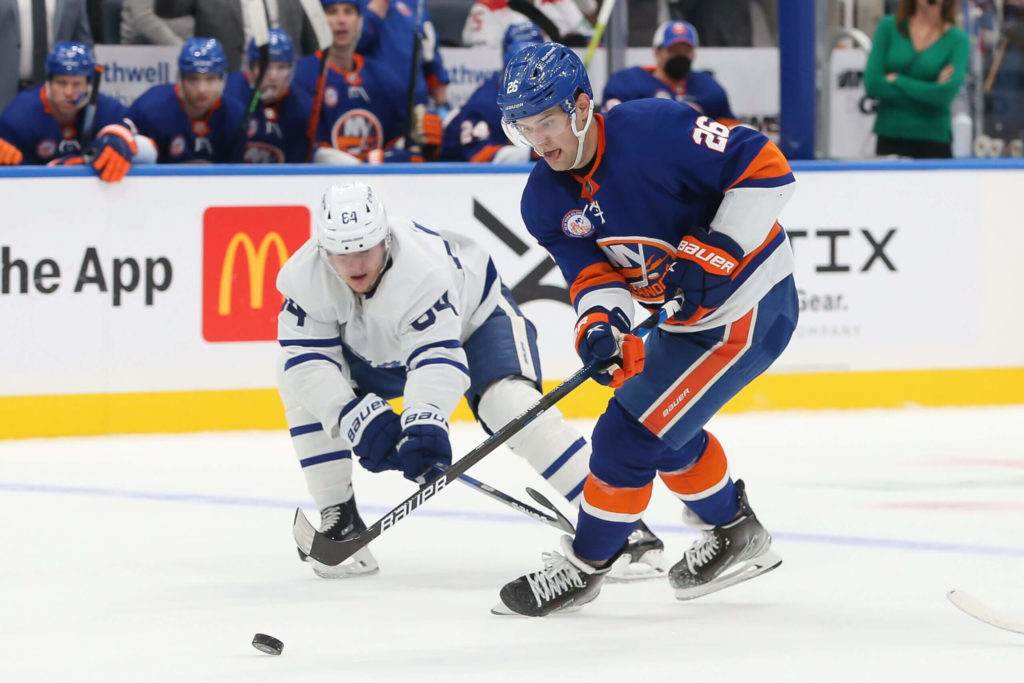
– I noticed Sheldon Keefe has been turning to the David Kampf line to start games and periods, including against the Rangers and Islanders. That could be a road strategy — they have to declare their starting five first — but it’s noteworthy that he’s going with the checking line to set the tone at the beginning of the games.
The recipe for them is pretty simple: they try to win the faceoff, get it deep, establish a forecheck, and put a puck on net. Ilya Mikheyev almost scored to start the second period against the Rangers following a Pierre Engvall forecheck and a Kampf retrieval. Against the Islanders, they started the game and again won the faceoff, got it deep, and created a chance. That’s some really effective work from this line in terms of starting a game with purpose.
– I had this in my notes from last week but didn’t include it: Nice defensive-zone faceoff win from David Kampf at the end of the game against the Blues to seal the win. He won it cleanly, and the Blues didn’t have enough time to create anything. The draw was also on his offside. It’s a specialty role, but it’s nice to have a defensive-zone faceoff specialist in the team’s back pocket.
– Against the Islanders, after the Leafs went to a power play, Casey Cizikas lost his stick. Morgan Rielly teed up for a one-timer inside the top of the circle, faked it, and tried to force a pass to Auston Matthews that was deflected and cleared.
It was surprising to see Rielly force it. He does shoot at a high rate, all things considered – among defensemen who have played at least 100 minutes on the power play (there are 24, so most legitimate top unit quarterbacks), Rielly is eighth in shots per 60 just behind Cale Makar and ahead of defensemen such as Torrey Krug, John Carlson, Victor Hedman, and Adam Fox.
In total, he’s putting up the third-highest shots-per-game number of his career. That follows his lowest shots-per-game rate last season since his sophomore year. The confidence in his shot is back, and it’s important to keep teams honest on the power play. For what it’s worth, Rielly led all players on the team in shots on goal in that game with four, and he later scored a great goal.
– I was surprised to learn that John Tavares actually leads the Leafs’ top-unit power-play players in shots per 60, shooting at the same rate as Steven Stamkos and a hair below Nathan MacKinnon. Unlike basically every player ahead of him (over 100 minutes played) save for Matthew Tkachuk, he doesn’t play the half-wall.
Overall, Tavares is in the top 40 in the league in power-play points (Matthews and Nylander within the top 15, by the way); he has become a high-end player in the middle of the ice on the power play after years of playing on the half-wall in New York.
– No Jake Muzzin and no Justin Holl, and yet Travis Dermott played 12:58 and 13:14 this week. I think it’s pretty clear where the coaching staff stands on him, in case that was remotely in doubt at this point.
– I was interested to see if Rasmus Sandin might receive some shorthanded ice-time with Muzzin and Holl out of the lineup, but he did not. Even Carl Dahlstrom played 1:23 there in his debut. Sandin was the only defenseman on the team not to receive a shorthanded shift against the Islanders. Sandin has been credited with under two total minutes on the penalty kill for the entire season so far, so it’s pretty clear it’s not in the plans for this season.
Quotes
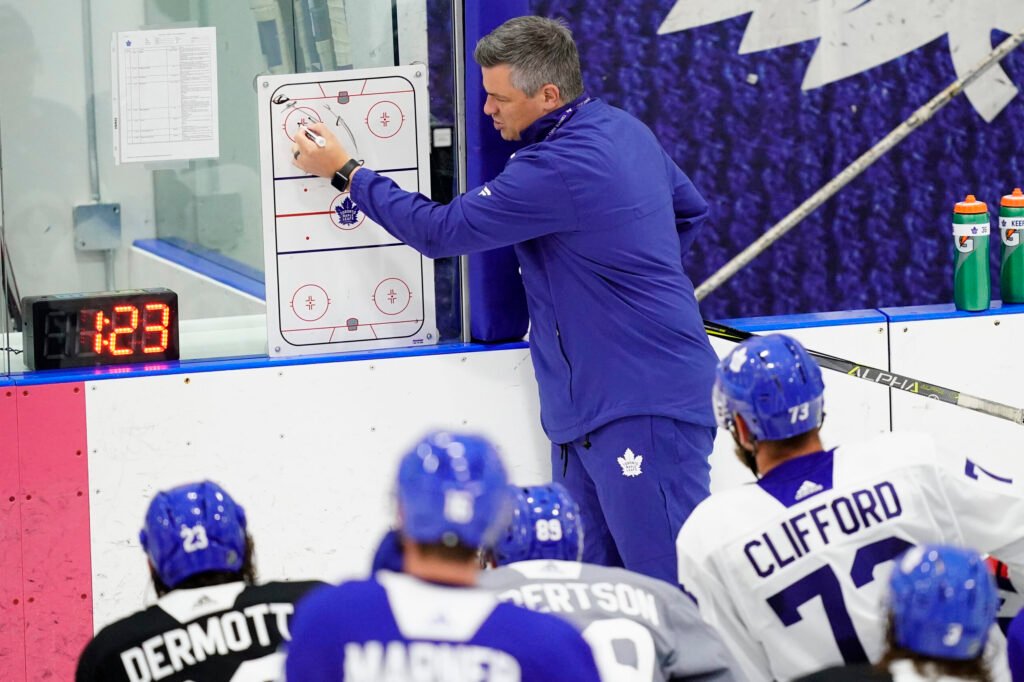
“A play that stands out to me: We were in the neutral zone. We were up 3-1 in the second period. The fourth line was on the ice. We turned it over in the neutral zone instead of getting it in and establishing a forecheck. In turn, their fourth line comes to life, gets on the forecheck, wins a puck back, and scores a huge goal.
Just little plays like that where you have one fourth line that goes out with a ton of purpose. Ours didn’t have the same. It ended up turning the hockey game. We weren’t good enough in response to that to win the game or get the game back going our way.”
– Sheldon Keefe on the Rangers game
This is a very astute and accurate observation from Sheldon Keefe. I liked how he discussed playing with purpose. In particular, the fourth line of late has simply been taking shifts and hasn’t been effective.
Every player/line should have a purpose, and the first three lines all have one. The top line is tasked with playing head-to-head against the other team’s best and winning the matchup; the second line is a scoring line, and the third line is a defensive-zone-start, quasi-checking line. As for the fourth line, are they supposed to provide depth scoring, energy, establish a forecheck… ?
“We were a little bit too soft, to be honest. We want to bounce back right away today. When we play hard and we don’t cheat in a game, we’re a really good team.”
– Pierre Engvall, echoing his coaches comments about the team playing soft against the Rangers
I know that Keefe walked back his quote and tried to provide a clarification, but if we’re honest, we know he meant what he said (at least to some degree) and it was rooted in truth for him. Apparently, some of the players thought the same thing, too.
I thought the Leafs manufactured a great response against the Islanders, which is noteworthy. They came out flying in their next game following those comments.
“I’ll look beside me sometimes thinking that I’m jumping up — and he’s already five steps ahead of me.”
– TJ Brodie on Morgan Rielly joining the rush
At one point in his career, TJ Brodie put up back-to-back 40+ point seasons followed by three straight 30+ point seasons. He still has some sneaky good offensive moments. I think his shot is legitimately underrated, to be honest; when he’s leaned into a few since becoming a Leaf, it can do some serious damage (he should use it more).
Brodie has done an admirable job of evolving his game into a bit more of a defensive stalwart rather than an offensive defenseman. I know he made this comment jokingly, but there is definitely some truth to it. Kudos to him for understanding his role on his pairing.
Tweets of the Week
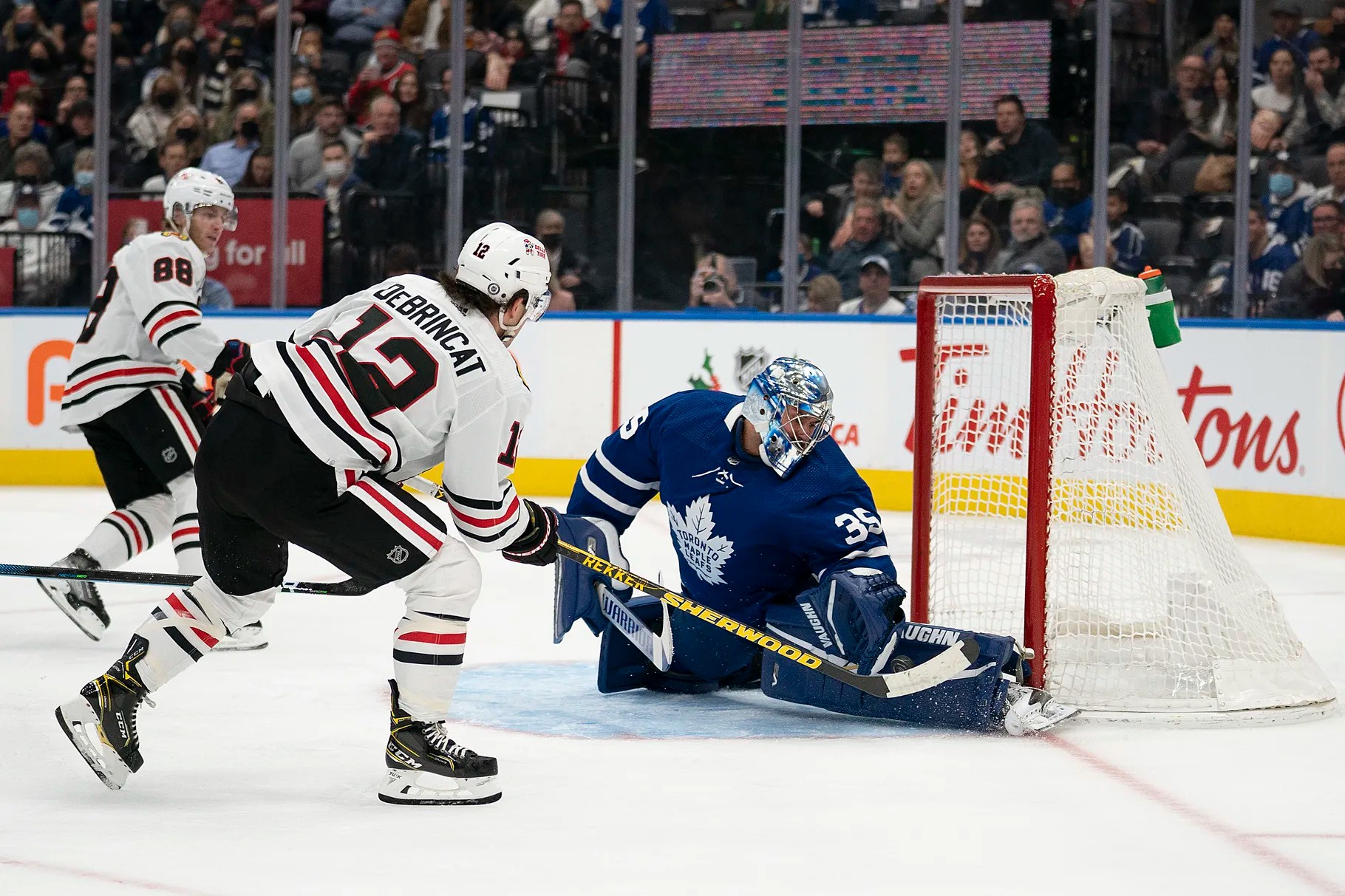
February Schedule 📅⬇️#LeafsForever pic.twitter.com/xjru2A5E5z
— Toronto Maple Leafs (@MapleLeafs) January 19, 2022
For all the premature talk about getting rid of Petr Mrazek and his salary — even though he had barely been given a shot due to injuries — this is why he’s necessary. The schedule is going to be compact; there’s an 11-day stretch coming up in which they play seven times. A team needs two goalies.
Here's a look at which U-23 #AHL Forwards (min 15 GP) have the highest Game Score/GP this season.
Data: @InStatHockey, @ahltracker
Game Score Model: @domluszczyszyn pic.twitter.com/TSElMr7xMx— Jacob Stoller (@JLStoller) January 17, 2022
Undrafted and a little undersized, Alex Steeves is having a really nice rookie season, clicking at nearly a point per game. He’s a player to keep an eye on at this rate and a great story (so far).
Listen the Leafs are a good team but holding leads is an issue. They’ve found ways to win. That’s great! But this issue – that is absolutely 100% an issue – is an issue. https://t.co/HOzqqVHOOF
— Steve “Dangle” Glynn (@Steve_Dangle) January 20, 2022
I don’t think the Leafs’ inability to hold onto leads is a massive issue at this time, but there quite clearly is something there. What has really stood out to me in most of the comebacks: Opponents were able to generate momentum, take control of the game, and keep attacking the Leafs until they completed the comeback. There was little in the way of pushback.
Against the Rangers, the Leafs were able to create some offense and generate a bit of pushback. Against the Islanders (who, in fairness, played the night before), they were able to generally control the game throughout the 60 minutes. Those are some modest signs of improvement if you really squint, but at the end of the day, they are only going to change the narrative by showing that they can bear down in pivotal moments, against top teams, and close out playoff wins.
5 Things I Think I’d Do
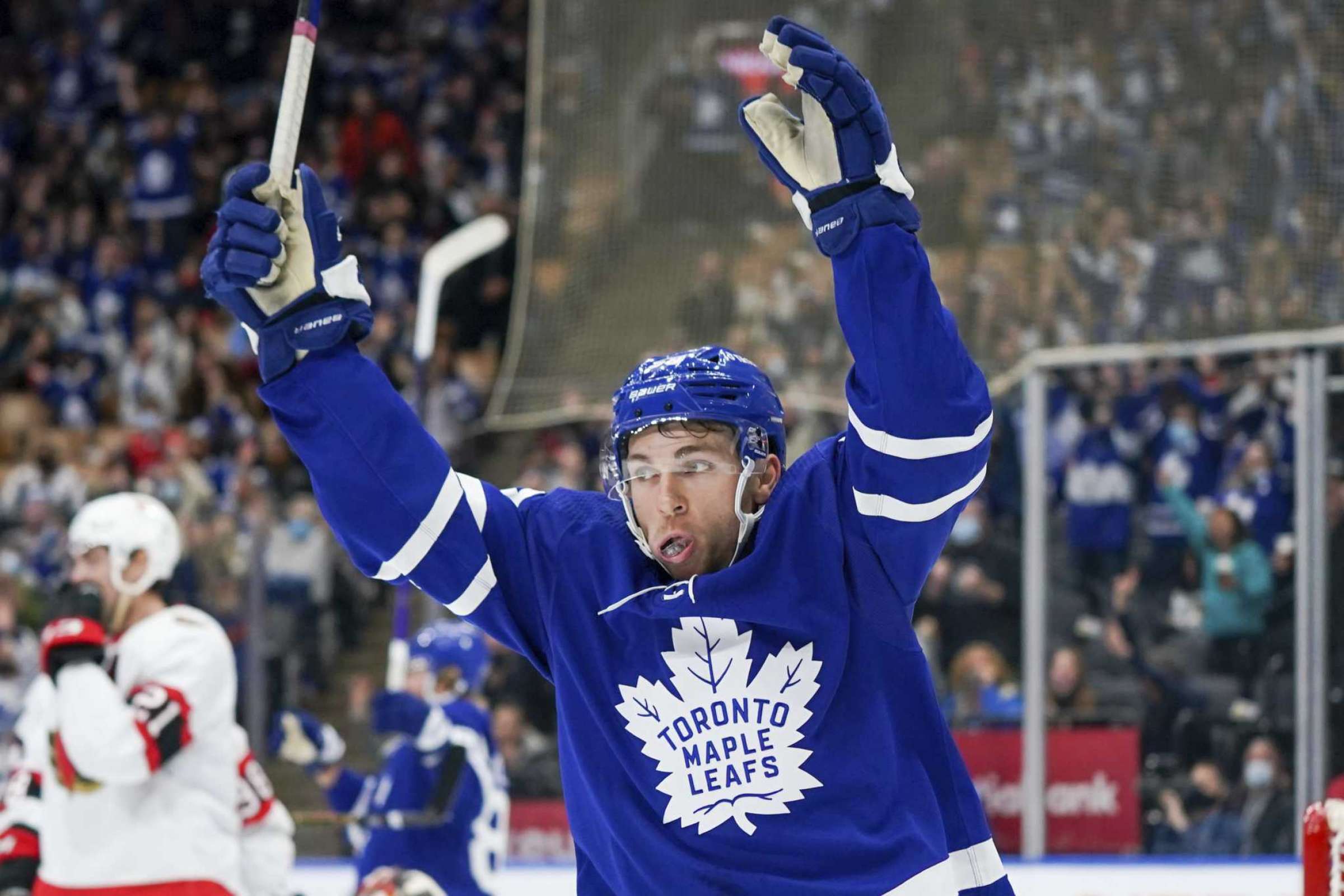
1. At this point, I think the only real forward line on this team that can be written in pen is the top line of Michael Bunting – Auston Matthews – Mitch Marner. They have done a great job. The rest of the lines are up for debate, though.
John Tavares and William Nylander are locked in as a duo, David Kampf is the 3C, and Jason Spezza will play somewhere on the fourth line. Beyond that? I think you can mix and match any of the other players in any of those remaining spots.
2. While I understand the desire to move Ondrej Kase into the top six, I think it’s not something I would do full-time. The third line needs a player of his calibre, and without Kase, the drop-off there is noticeable, especially once Ilya Mikheyev returns to earth. I’d still move Kase up at key times, but it’s not something I think they can do full-time with the current group.
3. This might sound strange to some, but I think I’d be somewhat interested in giving Pierre Engvall a look alongside John Tavares and William Nylander. I don’t think he’s a true top-six forward, but he has the ability to step in and provide some good things. He has the speed to keep up with Nylander in transition to along with a bomb of a shot (playing to nearly a 33 point pace). He can also cover for those two defensively if need be.
The puck doesn’t die on his stick — he’s capable of carrying it and making plays — but the Kampf-Kase line has looked its best so far with him on it. To me, it’s worth a look at some point; he’s playing well and has earned a bit of a reward.
4. At this point, I think I’d still be pairing up Jake Muzzin and Justin Holl on the second pairing when they return. I like both Rasmus Sandin and Timothy Liljegren, but I don’t think either is ready for a full-time, top-four workload against top-six forwards every single night. I’d give them looks here and there to help them develop, but I don’t think it is the solution for this season, anyway.
5. I think I’d start Petr Mrazek in the next game vs. Anaheim, and if he plays well, I’d start him the game after that, too. It’s not a goaltending controversy or anything along those lines. Mrazek simply needs reps, Jack Campbell has not been his best lately, and if Mrazek gets on a roll, I’d ride it out.
